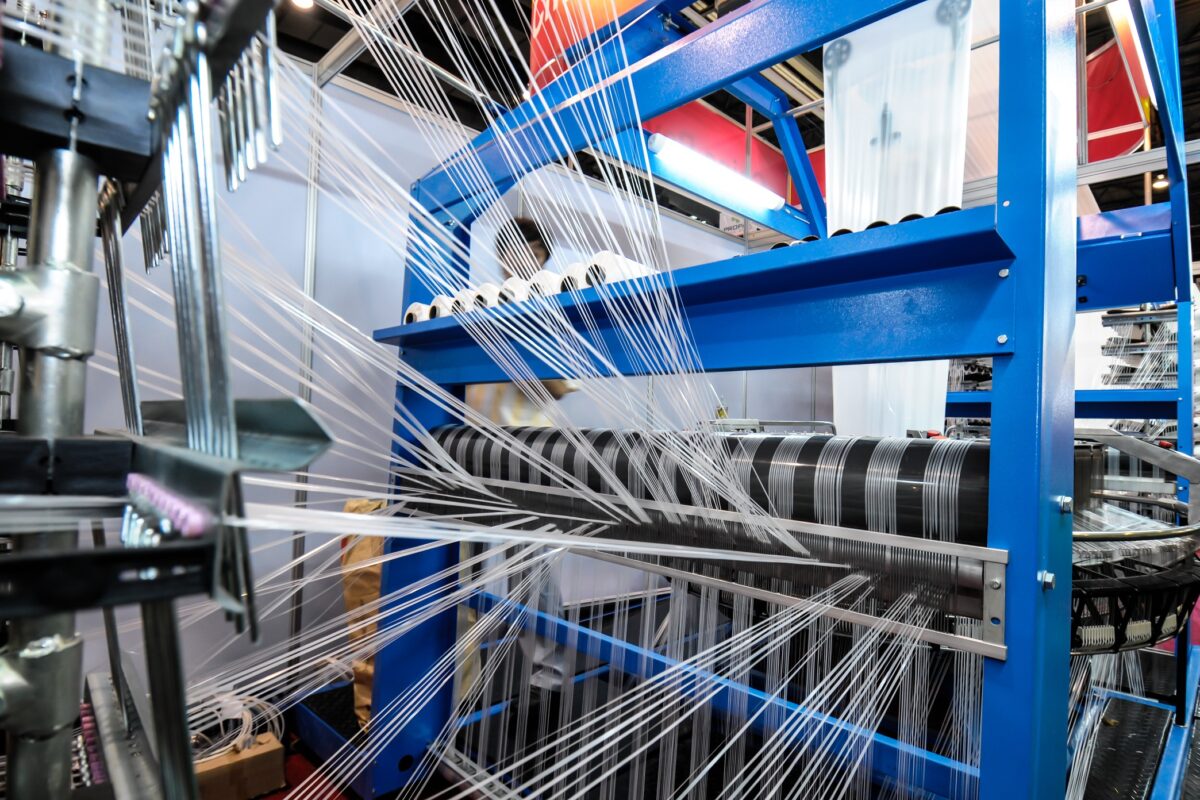
India’s textile industry, a key contributor to the national economy, is facing significant challenges, particularly with rising raw material costs, especially for cotton and man-made fiber (MMF). Industry leaders are calling for urgent reforms to enhance the sector’s global competitiveness, with an eye on the ambitious $350 billion target by 2030, including $100 billion in exports. The following are key policy recommendations aimed at boosting the industry’s growth and sustainability.
Ensuring raw material availability at competitive prices
One of the most pressing concerns is the high domestic prices of raw materials, which are significantly above global rates. The imposition of Quality Control Orders (QCO) on MMF fibers and yarn has created non-tariff barriers, restricting the free flow of essential raw materials. Industry experts are advocating for the liberalization of import policies, specifically reducing the basic customs duty (BCD) on MMF fibers, filaments, and essential chemicals like PTA and MEG. These measures would reduce costs for downstream textile products and support millions of jobs within the sector.
Removal of import duty on cotton varieties
To meet global quality demands, India is increasingly importing specialized cotton varieties such as organic and sustainable cotton. However, the import duty on cotton is inflating domestic prices, making Indian cotton 15-20 per cent more expensive than international counterparts. Textile industry stakeholders are pushing for the complete removal of import duties on all cotton varieties to make Indian cotton more competitive in the global market.
The volatility of cotton prices continues to be a concern for both farmers and manufacturers. Stakeholders suggest the creation of a Cotton Price Stabilization Fund, offering interest subventions and extended credit limits. They also propose transitioning the Minimum Support Price (MSP) procurement process to a Direct Benefit Transfer (DBT) model, allowing farmers to sell cotton at prevailing market prices without waiting for government intervention. This would improve liquidity for cotton farmers and help stabilize market prices.
To boost cotton production and meet the demand for high-quality cotton, experts recommend scaling up output from 5.5 billion kgs to 7.5 billion kgs by 2030. They propose the reintroduction of the Technology Mission on Cotton, with a focus on advanced seed technologies, better agronomy practices, and the adoption of international best practices in cotton farming.
Extending the interest equalization scheme
The Interest Equalization Scheme (IES), which has been instrumental in reducing interest rates for textile exporters, is set to expire in 2024. Industry leaders are urging the government to extend the scheme for at least three more years to continue supporting textile exports and improve India’s global competitiveness.
India’s textile industry is heavily driven by micro, small, and medium enterprises (MSMEs). To help MSMEs grow, industry representatives call for the establishment of an Alternate Technology Upgradation Fund Scheme, offering capital subsidies and performance incentives. Additionally, a special scheme to develop indigenous textile machinery would reduce dependency on imports and foster sustainable manufacturing practices.
Addressing polyester fiber deficits
India's textile industry is also struggling with a severe shortage of polyester-based raw materials, which are crucial for high-demand applications such as fashion, home furnishings, and technical textiles. Key materials such as Polyester Mother Yarn (semi-dull and bright), Mechanical Stretch Yarn, Polyester Monofilament Yarn, and specialized yarns are facing large deficits, hindering production.
For example, India’s domestic production of polyester mother yarn is only 5,720 tons per month, against a demand of 9,000 tons per month, leaving a deficit of 36.4 per cent. The absence of critical materials like high-tenacity polyester yarn and proprietary fibers like Polylana and Solucell, due to patent restrictions, further complicates the situation.
To address these shortages, industry experts are calling for policy reforms to foster local production and encourage technological advancements in polyester fiber manufacturing. Strengthening domestic production would reduce India's reliance on imports and strengthen its position as a global textile hub.
With these comprehensive reforms, India can ensure a sustainable and competitive textile industry that not only caters to domestic needs but also competes effectively on the global stage. By addressing critical issues such as raw material availability, price volatility, and technological upgrades, the Indian textile industry can reach its $350 billion target by 2030, positioning the country as a leader in the global textile market.












